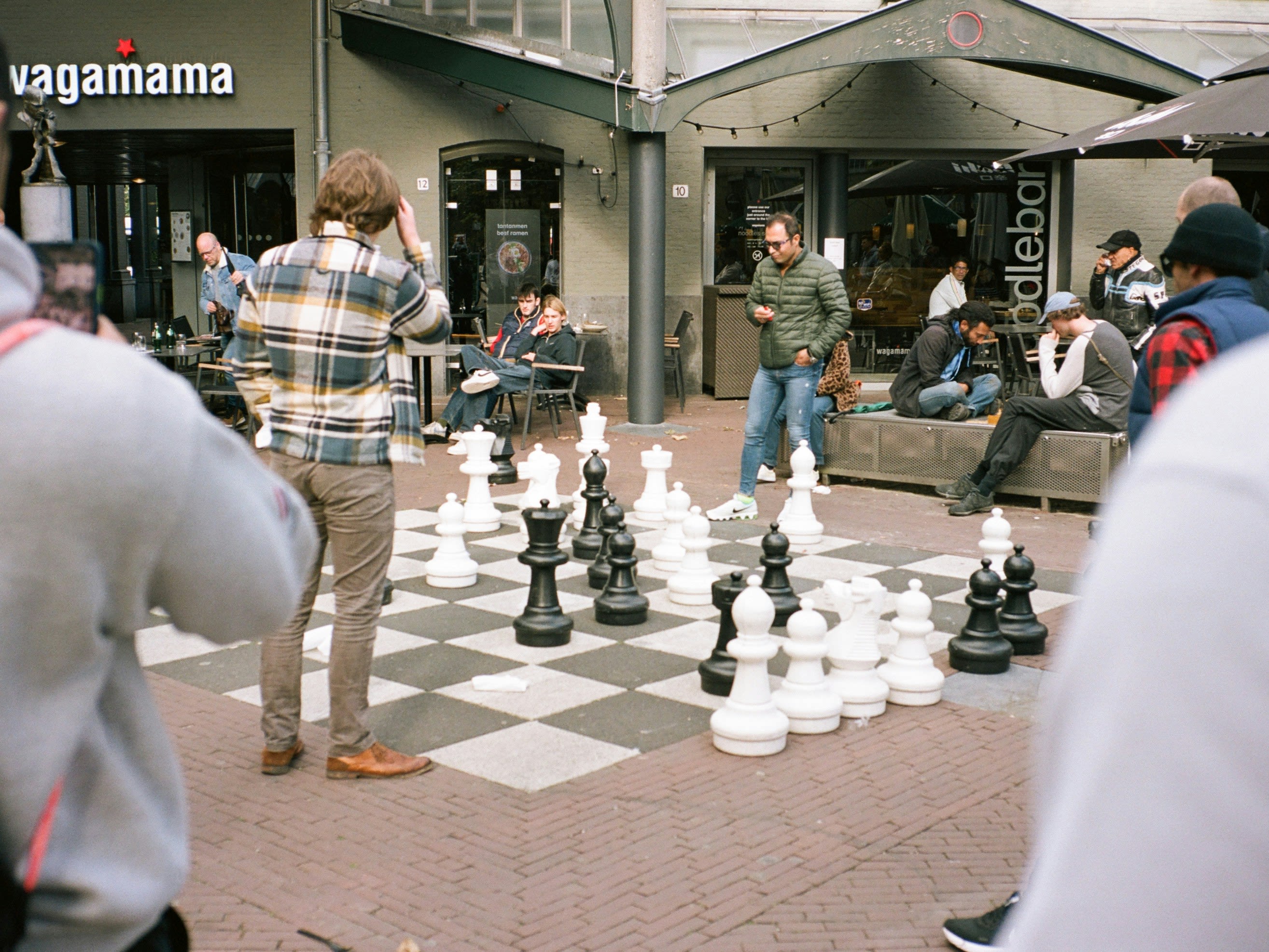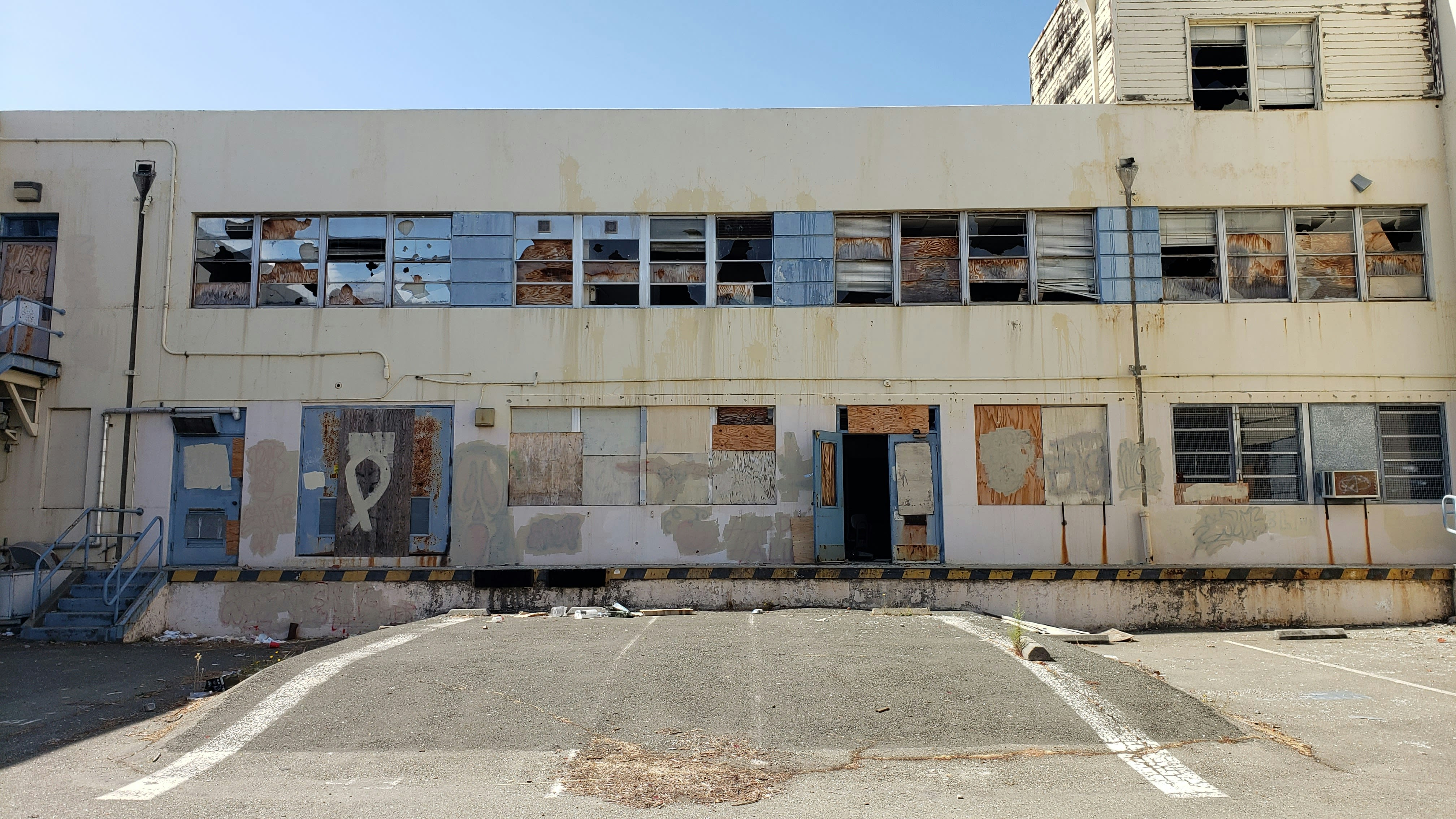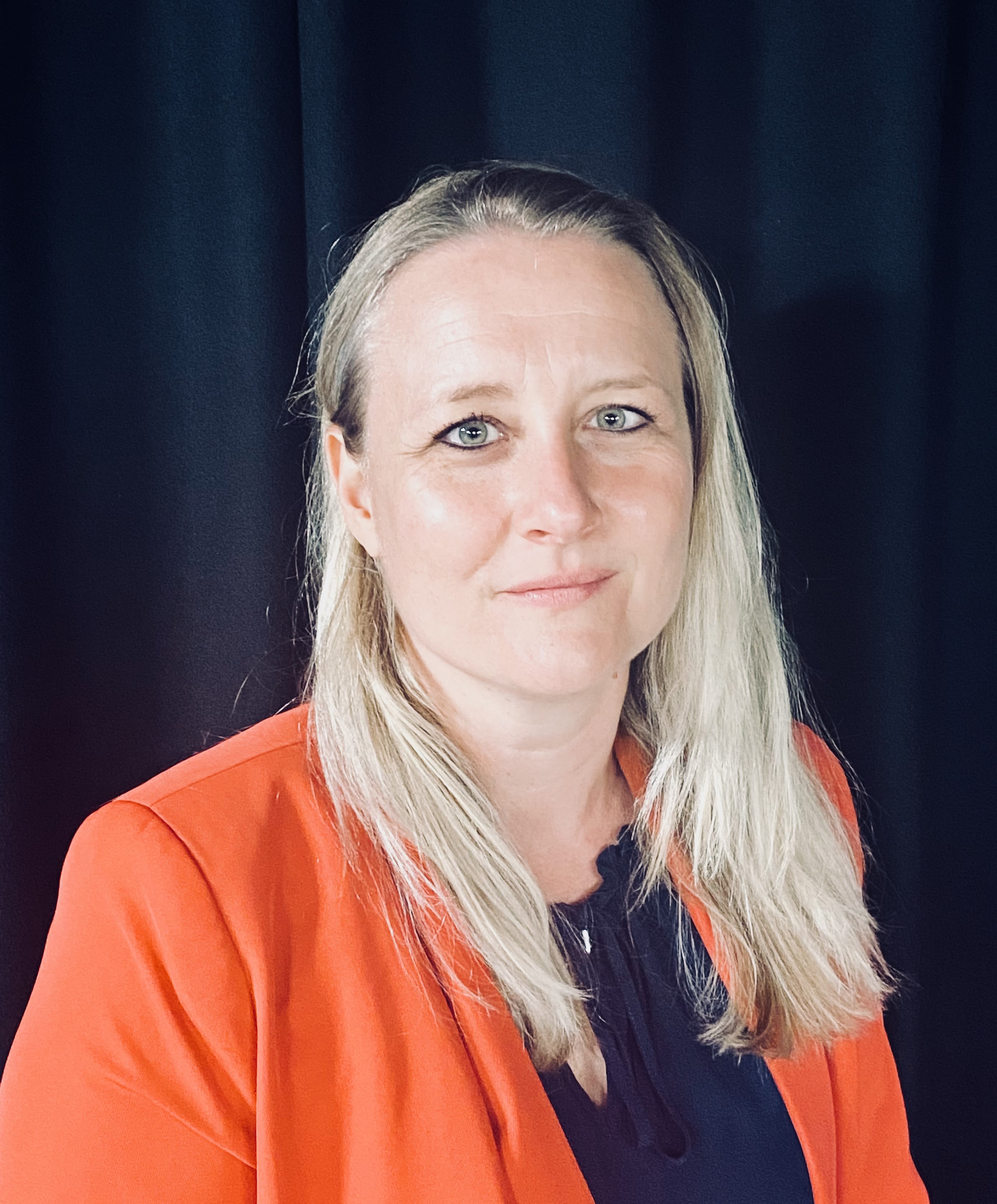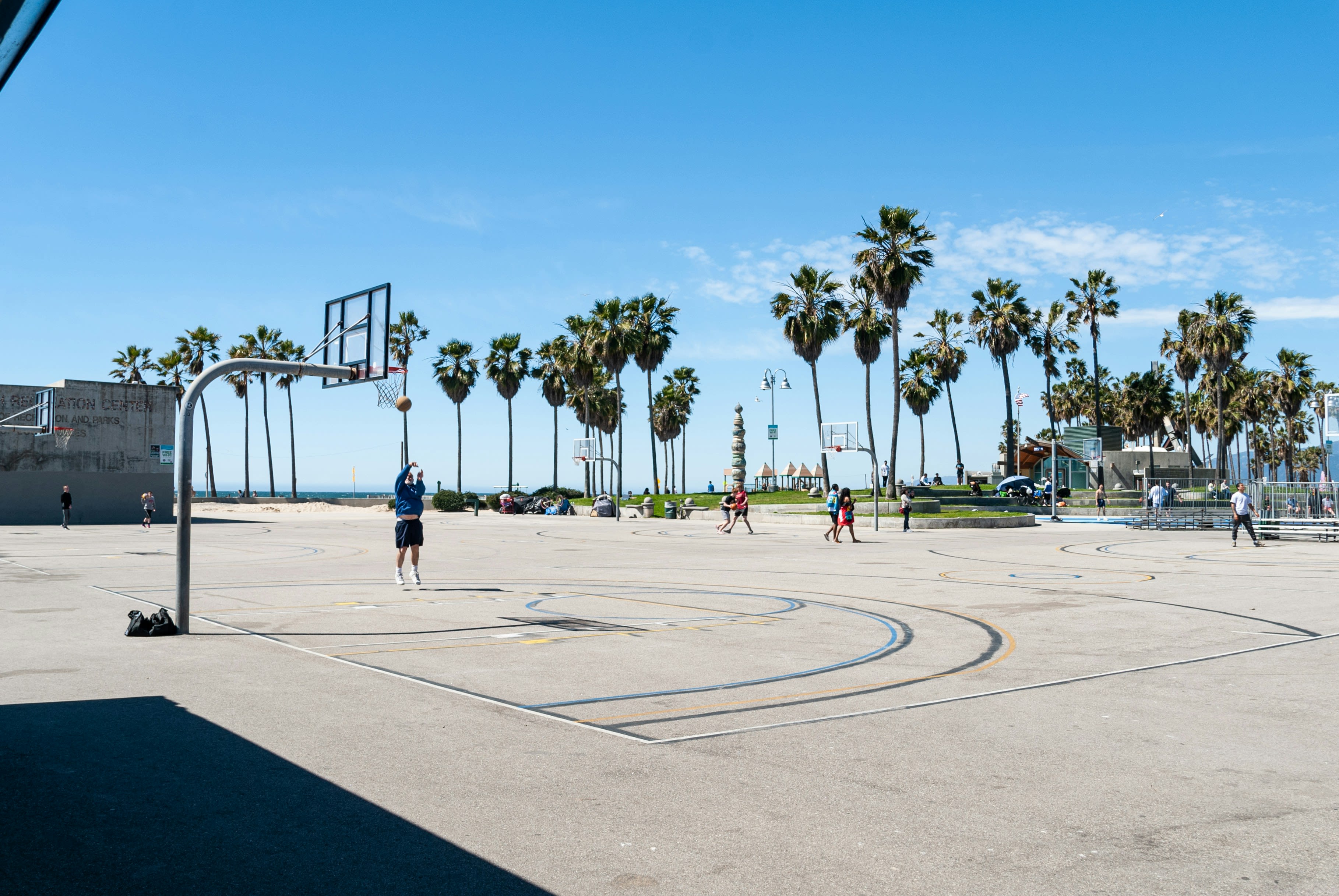Podcast: Cities in Flux - Rethinking Temporary Urbanism and Adaptability
Can mega-cities use adaptability and temporary urbanism to ignite innovation, support communities, and become more resilient?
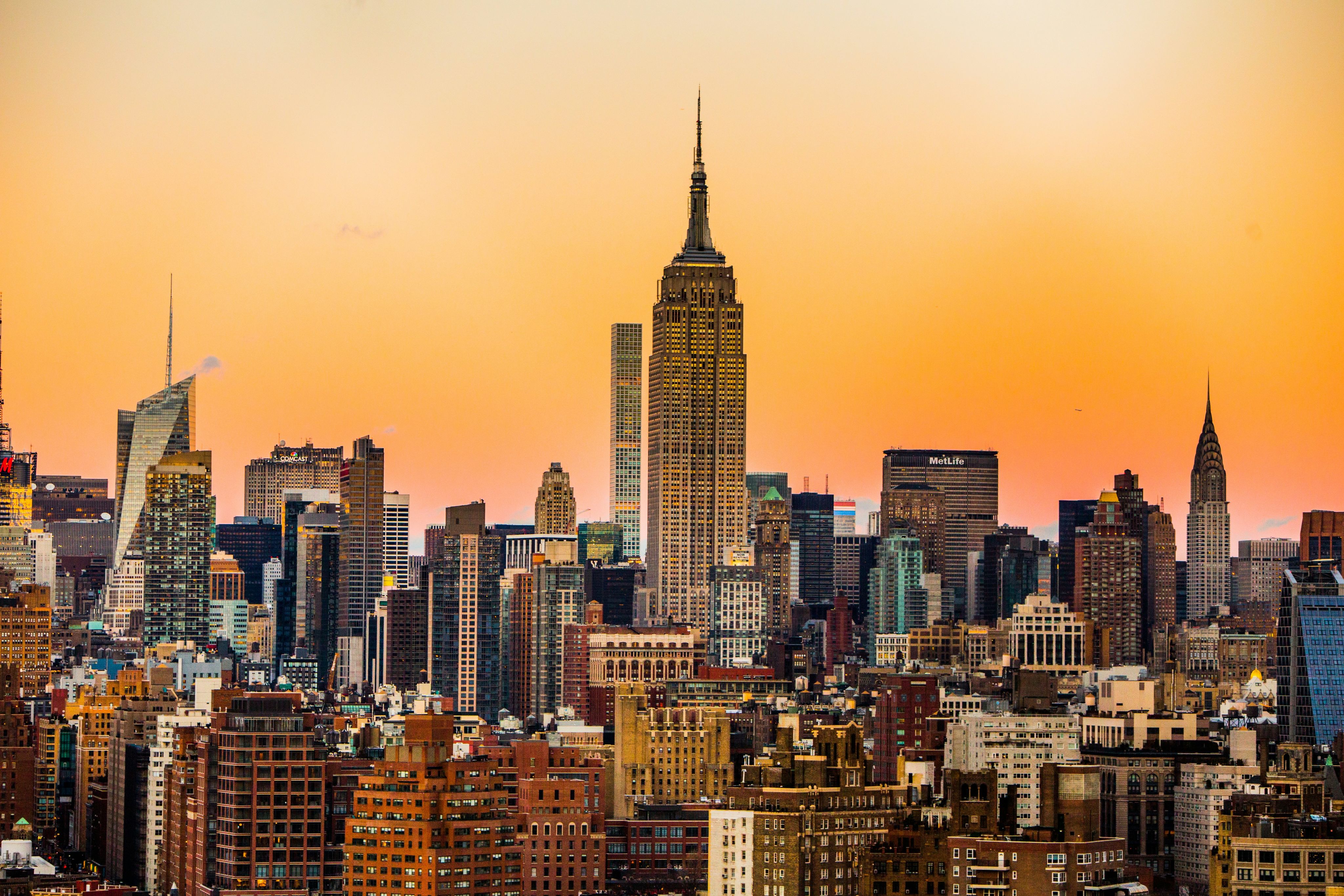
While adaptability sparks fresh and innovative approaches to urban design and planning, can city planners adopt tools like - temporary urbanism and meanwhile use - to create longer-term benefits for more liveable and resilient cities?
In this episode Professor Lauren Andres is joined by Andy Wiley Schwartz and Emily Berwyn to explore why adaptability is crucial for mega-cities like London and New York, how it can be put into action in city transformation and how it has helped them navigate major crises—from the decline of UK high streets to the COVID-19 pandemic.
Listen to the podcast
Photo by Fredrick Lee on Unsplash
Photo by Fredrick Lee on Unsplash
Transcript
Voiceover:
This is a podcast for the Bartlett Review, sharing new ideas and disruptive thinking for the built environment brought to you by The Bartlett faculty of the Built Environment at University College London.
Andy Wiley Schwartz:
I think it’s really really important to understand that cities, city administrations, city bureaucracies, we had plenty of space. We were good at space, but we were never going to be good at place. That was never going to work.
Lauren Andres:
It's about making people work together to think about liveable cities, liveable spaces differently.
Emily Berwyn:
Lots of landlords were like, well, people are going to trash my space. It's like, well, you've trashed it. You've like smashed up the toilet so nobody can squat it. You've done all these things to make sure nobody can actually inhabit that space.
Lauren Andres:
Hello, and welcome to this latest episode of the Bartlett Review podcast. I am Professor Lauren Andres, Director of Research at the Bartlett School of Planning. Today, we want to continue our theme of how cities evolve and transform. We've looked at issues around urban regeneration and also how artificial intelligence is impacting the planning process. But today, I want to focus on urban adaptations, specifically how cities like New York City and London have been temporally transforming their indoor and outdoor spaces. This topic is dear to my heart and at the core of my research, I have recently published the monograph ‘Adaptable Cities and Temporary Urbanisms’ with Columbia University Press.
With me here in London to help address those questions is Emily Berwyn. Emily is the founder and director of the pioneering social enterprise and advisory organisation Meanwhile Space. Meanwhile Space helps communities transform disused urban spaces into thriving communities.
And from New York we are joined by Andy Wiley Schwartz who works for Bloomberg Associates. Andy has been working for over 25 years, supporting cities and communities to envision and redevelop transportation infrastructure into public space and helping transportation agencies develop new policies, organisational designs and strategic plans. Andy and Emily, thank you very much indeed for your time today.
Emily Berwyn:
Thank you. Thank you for having me.
Andy Wiley Schwartz:
Thanks. Thanks for having me, Lauren.
Lauren Andres:
So really, to start this podcast, you both have been heavily involved in transforming cities in both London and New York City. Can you just tell us a little bit more what your work has been in the past few decades in this area? Emily, do you want to go first?
Emily Berwyn:
Sure, I'll start. Thank you for having me. I studied urban design as my Masters and really knew that I didn't want to go into a traditional practice with it as a discipline. And I began looking at vacant spaces and started Meanwhile Space in 2009. So it's probably been about 16 years that I've been thinking about this idea of actually how do you do things a bit differently? How do you look at vacancy to support communities to activate them? It very much started through the recession for me and the 2008 credit crunch recession of how do you create community uses and activation on the high street but has since gone on and grown since then and is very much about working in deprived areas and providing access and equality of space to those from more marginalised communities.
So Meanwhile, it's more of a tool for utilising vacant space, whether it is land or buildings from our perspective. And as a social enterprise, we have a very social mission with what we use them for. There's lots of others doing more commercial activity. And for us, it is much more the social side that we're interested in.
Lauren Andres:
Thank you, Emily. Andy?
Andy Wiley Schwartz:
My journey started in the mid-90s. I moved to New York and I joined an organisation called Project for Public Spaces. And there I helped write some books and work with communities to re-envision their public realm. We worked in transportation facilities. We worked in parks. And then I translated that work when I was lucky enough to join the Bloomberg administration in New York City when Janette Sadik-Khan, who became the Transportation Commissioner in 2007 hired me to develop a public space program for New York City DOT, which came out of a big re-envisioning plan for New York that was called Plan YC that Mayor Bloomberg launched that year.
And was an effort to make New York as green and sustainable and liveable as possible as it grew with population. And the only place where we could really find new new land to convert into public space was in our streets. And so we developed a plaza program for New York City and the way that I designed it was that neighbourhoods and community groups would apply to the city, would apply to the DOT, to partner with them to redevelop street space into public space.
The mission really here is to redefine what streets are all about and what they can do, and that they don't just need to carry cars and trucks. They can provide access just for people. They can be all kinds of different things. And I think over history, we've reimagined our streets to be lots of different things. But over the last hundred years or so, we've very narrowly defined what we want our streets to do.
After Mayor Bloomberg left the city, he went back to his philanthropy and started a non-profit consulting firm called Bloomberg Associates. Janette Sadik- Khan and I and several others work with cities all around the world explicitly with their mayors and their top staff and their agency staff to help them solve problems in all different sectors and looking at technology and community process to create more public space improve the public realm, improve transportation, improve access
Lauren Andres:
Thank you both. Really what brings us together today is our interest, our commitment in thinking about cities differently, We all come in with this interest into what I call temporary urbanism, this idea of urban making, but without thinking about permanence, thinking about spaces in the city differently, using spaces in a temporary way. Andy, you mentioned street. Emily, you mentioned vacant spaces. And if we're looking across the years and what happened in the past 10, 20 years, temporary urbanism actually evolved a lot. A lot of it initially was bottom up, then it became more top down. And I think really now we are in the context of hybridity, where it's really a partnership. And again, you both mentioned it already. It's about making people work together to think about liveable cities, liveable spaces differently. But obviously, this way of thinking of temporary urbanism has evolved a lot recently, of course, because of the pandemic, because of what happened post-pandemic. And it would be really interesting to hear how you've been seeing, observing this evolution of temporary urbanism over the years.
Emily Berwyn:
When I first suggested that we might take a space on temporarily in 2008, I think it was, I was literally laughed at by the local authority. They said, this just doesn't happen. I don't know what world you're living in. Back then you had 25 year upwards only commercial rents and that was it and you know somebody went bust they went bust but otherwise you just had to keep paying that rent. And it was just madness so you had all these empty spaces increasingly so but no mechanism or acceptance that there was a kind of flexibility or people that might want to use those differently. And so when we first started delivering the Meanwhile project for central government during that 2008 credit crunch, it was very much like, actually, there are people doing this. Why are they doing it? How are they doing it? What obstacles are they facing?
And lots and lots of landlords were like, well, people are going to trash my space. It's like, well, you've trashed it. You've like smashed up the toilet so nobody can squat it. You've done all these things to make sure nobody can actually inhabit that space. You've ruined your space not the people who are coming in who are actually going to paint it and get rid of the rats and make it look nice and open the doors and give you reduced insurance. So a lot of it was about education understanding people's fears and like and sort of finding ways around those barriers learning from people who are already doing it and understanding what those obstacles are that were getting in the way and then developing toolkits and leases and various things that would demystify that process I suppose.
And sort of slowly slowly over time we sort of made the case for this actually being okay and a good thing and saving money and helping an asset helping to let it you know it all had to come down to money and I think now it is much more accepted and it is much more part of the commercial property process it's not new we've always used cities in this sort of transient way and it's just becoming slightly less obsessed with what people call permanence when there is no permanence.
And so it is something I’ve been banging on about for a long time and really now it is more less of a concept and more of a tool in an accepted way of regenerating places I think it's becoming less so but people then go well actually is it just expensive pizza and shipping containers then because they see this one example or you know that that's around the place. So it's always a constant education and re-education of what this tool can actually be used for. But it is it is needed more and more and it is being asked for more and more but the process for doing it is still misunderstood as it's complex, like these difficult buildings and difficult spaces are empty usually for a reason.
Often it's because the traditional process of commercial property can't make it work. And so finding a different way around that is a challenge often. And we've taken on many assets and leases that frankly were too risky and, you know, a bit silly to take on in order to learn and to share those learnings. So for us, it's been very much about disseminating the learnings from the risks that we have taken along the way. That's the interesting part to me and how you activate that and what you can use it for that's slightly different and brings that diversity.
Lauren Andres:
And this resonates a lot, Andy, with what you've been doing in New York City with the streets.
Andy Wiley Schwartz:
We also had squatters in the street, people who would go out and sort of paint a bike lane, people who would go out and build a new bus stop out of cinder blocks and plywood and two-by-fours and try to remake the city streets to be more liveable and accommodate lots of different uses. And they called that, that was their form of temporary urbanism. And then we came along and sort of took the idea and to some extent bureaucratised it. That process takes so long. In New York, it's achingly slow. It happens at like a medieval rate. I mean, it can be decades or more to go through the capital rebuilding process that we needed to figure out how to do something faster.
The hard part is working with the lawyers and working with the city to actually create a new process to do something that they've never done before. And when you're breaking all of those moulds and setting all these new precedents, everybody gets very scared because they've never done it before. And they're afraid of getting sued and they're afraid of all these different things. And so for us, we started with a space in Brooklyn and a smaller space in what's now known as the Meatpacking District in New York City in Manhattan. And then, of course, we had Times Square and the work we did up and down Broadway. And that sealed the deal. I mean, once Mayor Bloomberg committed to doing that, then we knew we really had a program that would thrive, and we had something that everyone would recognize was doable.
And so I think we have a lot in common there with sort of breaking the mould and convincing people that we can do it. And you actually probably had a harder job than I did because I was doing it from the inside. And I had the support of my commissioner, and I had ultimately the support of the mayor, whereas you were having to convince from the outside. And that's quite a bit more difficult.
Emily Berwyn:
Indeed, indeed. It was about working with the willing. I think we said a lot. It's like, you know, if you get a door slammed in your face, fine, we'll go somewhere else. And we have the benefit of 32 boroughs. So in a way, we have to convince each one each time that it's possible and go through the process with their lawyers and the property team and, you know, convince them each time. But if there's someone being incredibly difficult, we can just go somewhere different, which is helpful to know, actually gives you a sense of power in a very powerless dynamic.
Andy Wiley Schwartz:
I totally agree. And when we work with other cities and they want to develop a public space programme from their streets, the first thing is you have to find a neighbourhood, a community, a district mayor, however your city is constructed sort of locally, right? You have to find the place where you have really local support so that you can go somewhere and experiment with a willing group of folks So we have to find the local partners and the local elected officials who will stand up with us, stand up with the mayor and support doing something new and different, be excited about it.
Lauren Andres:
I think you both have just been championing this way of using street differently, using vacant spaces differently, and really pioneering innovation in how we're thinking about cities. What, Andy, you didn't mention yet is everything that happened in New York City when you were working on those streets. This has been feeding how New York coped during the pandemic, when we know that the transformation of streets, the use of streets as public spaces was very much at the forefront of helping communities during the pandemic to cope. Clearly, when we're looking in New York City, how and where now we can find open streets. So those temporary street closures, you can find some in Queens, you can find some in the Bronx.
And indeed, here we are dealing with deprivation, we're dealing with social inequalities where communities have very, very little access to green spaces, to places where children, for example, can play. And similarly, Emily, I know that you've been working in a lot of very deprived neighbourhoods where those temporary projects you've been setting up have been at the forefront of helping really communities to cope. I'm just wondering if you both, you could just expand a little bit on how really temporary urbanism is at the forefront of supporting communities in need?
Emily Berwyn:
Sure. So I think probably the best example is Loughborough Junction, which is in South London, and it sits between Brixton and Camberwell. It's got a lot of physical barriers. It's got a lot of train tracks that cut the whole neighbourhood. It's got very high density social housing. It's also got a lot of sort of gang issues, prostitution, drug issues. Like it's very socially challenged as a place. And we've been working there for, I think, 12 years. And initially it was almost a kind of active research project to get to know people, to get to know that neighbourhood, to understand what it needs from its space and what the people in that neighbourhood need to be able to progress, benefit, make life choices that they wouldn't have otherwise.
And so we took on a former public toilet that was squatted at the time and owned by the council. And we got in this space we cleaned it up we were very you know we had a lot of like scary warnings from the people that were giving us the keys like don't touch anything don't sit on anything you might and you know and we had a lot of people who were inquisitive very quickly saying what are you doing and we were saying well we're we're creating a space for local people to come and test their ideas. And they said, well, we liked it as a crack den. Where are we going to drink our street drinks? Why are you taking this space away from us? And then, you know, over time, as we carried on, as we kind of committed and weren't just new, we made friends with the mechanics down the road.
They offered us to share their bins. You know, we offered them to share our printer. And over time, we made friends, and we started with this frankly quite crappy little space and ran this programme and gave people ideas or their ideas a chance to be tested for free in this space for between a week and a month and then from that they had the opportunity to sort of progress into these shared spaces that we'd created in nearby arches but we'd only decided what they were going to do once we started meeting people and understanding the kinds of things that they needed. So they needed event space as well as showcase space and a space for desk work and then from that they could graduate to their own art.
And then from that, they could graduate to different spaces. Our priority was making things. Relationships building relationships with people and understanding the place and what it needed. So it's about democratising for me and creating a lower spec more accessible less intimidating route to for people to trial their ideas, whether that is coming together to grow there's a farm there coming together for well-being, whether it's coming together to for business whatever that business might be, whether it's leisure and activities really it's very much led we create the kind of infrastructure in the framework and then we manage it in as accessible a way as possible .
Lauren Andres:
And it is about local empowerment, local form of democracy, and really getting, I mean, any kind of people involved. And I think that really matters. And yeah, I'm sure this is resonating with everything you've been doing in New York City as well.
Andy Wiley Schwartz:
Yeah, absolutely. I mean, I was approaching things from the government perspective, so it was a little different. But when we started the Plaza Program, people told me over and over again on the city side, ‘oh, this is just going to benefit wealthy neighbourhoods that have strong business improvement districts, and they'll be the only ones who will apply, and then you won't be doing any work in underserved neighbourhoods’. And I said, well, I just don't think that's going to be true because there's a lot of associational life in these underserved neighbourhoods.
So we tried it out. And when we launched the application-based process, we got applications from all over the city, which I was very, very happy about. But this is hard work. It's hard work to activate and maintain a public space. You know, we had 9 million people in New York City, and it's a big city. And when I'm sitting at my desk at the DOT, I can't be aware of all the things that are going on in a neighbourhood. And so we had to just give away the power and control to these partners, but then that gave them a lot of responsibility.
And we realized pretty quickly that we were going to need to change our model and give neighbourhoods more help than we had initially thought we needed to give them.
And so now we have these groups that are, that are getting this extra support. I think it's really, really important to understand that, you know, cities, city administrations, city bureaucracies, we had plenty of space. We were good at space, but we were never going to be good at place. That was never going to work. So I had to say, I have this property. I can make it available to you to do something different on it. But what that thing is, aside from some seeding and some plantings, that's going to need to be up to the neighbourhood. And lots of people in the design community, lots of architects and planners and folks from those neighbourhoods would say, you know what the space really needs? It really needs a fountain, or it really needs this or that. And I said, that's not my job.
My job is just to make it as easy as possible for the neighbourhood to decide what it wants and get that thing and tell me what that is. And when you see the temporary chess table come out, And then all these folks are gathered around and it turns out there's this big thriving chess playing community in that neighbourhood that I would have had no idea about. Your job is just to sort of clear the way to allow these things to flourish locally. And whether the neighbourhood is affluent or not, there's plenty of things that people want to do and can do in these spaces. You just have to make it possible for them to take that chance. Yeah. You know and play in the street.
Lauren Andres:
And the play in the street.
Andy Wiley Schwartz:
Safely.
Lauren Andres:
Yes, safely. It's important, indeed. I'm always thinking about the 34th Avenue coalition in Queens, where it's this temporary street closure, which is led by community members where children can play in the streets. They can cycle. People can learn English. People can receive guidance on what to do in terms of paperwork to apply for citizenship, for example. Everything is happening in the street, in this community where there's very little access to green spaces. And I think it's just absolutely fantastic. And to be honest, we haven't done that much in London. And I think that's something which I'm sure Emily would agree in a way. And I think this is really a shame. I always remember a discussion we had with Emily during the pandemic when you were telling me that there was a lot of discussions happening on temporary meanwhile users for hybrid working. But on the outdoor space, on streets, there was very, very little thinking.
Emily Berwyn:
Yes, absolutely. I think that everybody sort of went into shutdown and panic. And I think that certainly in London, we've had an era of the public sector being very generous in that sense and able to be very generous. It was well funded with resources. It had capital money.
And I think that what happened in London was that some of that thinking was already underway in certain places around how people were starting to want to use space and to rethink that. But most of our projects got stalled and most of our projects were forced to close because the legislation and the guidance was that nobody should be going to work at all.
There was such a sense of panic that I think came from a place of fear and concern and everything like that but that has continued and then with the reduction and the sort of tight financial tightening in local authorities that pattern has increased and that risk transfer attitude has increased which is frankly making delivering projects even harder now than it was. So I think we were in a good stride before the pandemic, but it's taken a bit of a dip and now we need to think about how we might do things differently.
Andy Wiley Schwartz:
Well, there's no question that the pandemic supercharged this whole idea of managing streets differently and what you can do with streets when you don't just dedicate all of the space to vehicular traffic, right?
There's an amazing story about that neighbourhood of Jackson Heights That started when I was first at DOT, and a small neighbourhood group asked me to come out to that neighbourhood. And there's 34th Avenue. There's one neighbourhood park. It's sort of half a block. It's called Travers Park, and that was it. And everywhere else was streets and apartment buildings and houses. And so they said, we really need a bigger park. So can we take this side street that's adjacent to Travers Park and can we just, you know, close it to traffic on the weekends in the summertime so that the kids have more places to play? We hadn't really ever done that before, but, you know, we said, okay. And the next year they came back and they said, look, this was great, but like, it's really hard to get the cars off the street and it's really hard to clean it every weekend when it's done. And, you know, it would just be better if we could just do it for like the whole summer.
And so they closed it for the summer. And then after that, they turned it into a plaza. So then the street was permanently closed to traffic, at least most of it. And that just became part of the park. And then we graduated that into a capital programme so that we could sort of tear up the street and turn it into literally redesign the whole thing so that it was part of the park. And because the city was, I don't usually use this word, but the city was nimble enough to accommodate those requests over a period of time. Now we're talking about, you know, a decade and so, you know, everything has to be right.
In order for something like 34th Avenue to work, it's very hard to replicate. But the example sort of proves the rule that you need these strong neighbourhood bonds to make it work. But I will add that it's a very happy story, and we all love this story, but there's tension now that develops out of these things. So the city has to come up with a structure and a management structure, and this will bureaucratize this system, and it also is making it somewhat difficult. And Emily, you pointed out this risk issue with the city. And, you know, there's very little upside for lawyers to say, yeah, go ahead, try that out. Let's see what happens, right? I mean, it's just much easier for them to say no. There's very little upside for them to say yes. And the biggest problem that we have,
And I would be remiss really if I didn't point this out, is the continuing issue of insurance and liability for the partners and these small groups that really can't take that on. So we have to always change this balance of what the city is doing and what we're relying on the neighbourhood to do. We have to rely on the neighbourhood to do enough to make that space authentic to the neighbourhood, but we have to be able to give them at least enough of what they can handle in order to make that whole process work. It's quite a difficult balance.
Lauren Andres:
It's about agility, agility and regulations to a certain degree and to the degree when then it's going to clash with liabilities, with insurances.
And you both have been really touching upon funding, where the money is coming from, and also what time of still regulations need to be put in place and for how long. And in relation to this, this has a lot of implications.
Insurance, as we said, I mean, who is ensuring the safety of this place? And I always remember that in New York City, typically what happened during the pandemic, there was very little police presence for obvious reasons because it was during the Black Lives Matter movement. So the lack of police actually allowed also communities to thrive to a greater extent. And the safety was done by other organisation and community members. I'm just wondering, you both, if you want to say a few more words on regulations, especially.
Emily Berwyn:
I think when you are trying to push the boundaries of what everybody considers normal in a particular industry and you're championing a cause and you're making an argument and you're demonstrating and you're finding the precedence all we can do is is is sort of stand back and look at each place with perspective and the best interests of every party and so I think you will always get regulations those regulations will always change you do need to make people safe. A lot of what we do is about from the sort of more charity side is how do we support people with public liability if they want to go and do it themselves. How do we build their capacity and knowledge as individuals out you know all over the world the country to to do this. And how does everybody in their own place keep challenging from that more human side and working in a complementary way with the sort of public sector to do the common-sense approach, I think, is important.
Lauren Andres:
Andy?
Andy Wiley Schwartz:
I started out doing this work on the community side, on the community development and community-based planning side and just being constantly frustrated at city bureaucracies and the Department of No, and all of these things that we used to talk about and be frustrated about. And when I came to the city, I had to develop a lot of respect for why some of these things are in place. And I think the outdoor dining thing is a really great example of that. Let's just say in New York City, we couldn't just continue to have this sort of free rein of outdoor dining and curb side uses. But eventually the city has to regulate these things. That’s city property that you're monetising for your private restaurant, right? And you used to have to pay for it, and you should have to pay for it, but what the right fee is and whether or not they need to be movable or removable and accessing infrastructure and all these different things, it's a very hard, complicated thing to figure out from the city side. And I always said, the regulations aren't perfect.
Just like, you know, when you first started to open up these Meanwhile spaces, Emily, and when I first started to work with the city to develop these new public spaces in the street, they put a lot of regulations on us that wound up not necessarily being regulations as we sort of proved the concept and moved along. But I believe that over the next, three, four, five, ten years, most of those things will change and develop and it will become much easier as the city gets used to this process and as we work together as , a city council and a mayor and neighbourhoods and restaurant owners. So I just believe in sort of this incremental change and, you know, you never get everything you want all at once.
And when we say temporary urbanism, yes, it can be fast. Yes, we can be nimble and move into space quickly. But how it develops and changes over time and the development of temporary to permanent, that's something that we have to take our time with and make sure we get right.
Lauren Andres:
Thank you both. This is very meaningful and powerful. I want to ask you about knowledge and skills. We are the Bartlett School of Planning. We're training the next generation of planners. You are working with a lot of built environment experts. I'm just wondering what are the skills needed to do what you do and what do we need to teach our students to be able really to deliver temporary urbanism in the way you do it?
Emily Berwyn:
Well, I think planners and regulators need to be able to be agile. They need the skills to work in partnership, to really respect others and it not be about hierarchy and power. And they need to be able to sort of stand back and put the place and the people first before risk and regulation and legislation. Really, what is the pragmatic approach here and how do we achieve that together, collectively?
Andy Wiley Schwartz:
Yeah, I think that's totally true. I agree with that 100%. And I also, I really value public service and I really value understanding the municipal perspective and understanding how hard it is to do that work and how rewarding it is to do that work. How rewarding it is to be responsible for the public realm of your city. And so I always encourage students who ask me this question, you know, go work for a city, go work for your city and feel what that feels like. And you'll be a better consultant, you'll be a better designer, you'll be a better planner as a result of that.
Lauren Andres:
And to conclude, because we're really reaching the end of our podcast, I'm just wondering, you've been championing really temporary urbanism in different cities at different levels. If you were to tell us where you think temporary urbanism, adaptable cities are heading to. What are the sort of directions you are seeing as emerging in terms of temporary urbanism and adaptable cities? Are cities going to be better prepared are cities going to be more equitable where do we stand?
Emily Berwyn:
Well, that's a big question to end on. I think that we need to move away from, we've been through an era, particularly in London, where it's public sector driven. And previously to that, it was sort of wealthy private sector. And I think that actually what we need to be more is sort of place and community driven and to enable governance models that allow local communities to take charge and control and deviate away from the constant pursuit of viability and commercialisation. That's the only way to actually do this and continue to do this in a way that I think is going to positively benefit places and people. Yeah I think it I think if we if we allow it to continuously be this thing that becomes more and more refined and professionalised you're going to get away from the core essence of what temporary urbanism is and actually you need that that sort of cross-sector partnership working and supporting the capacity of that is a really important part.
Andy Wiley Schwartz:
I’ll take a slightly different attack at the answer. I’m very optimistic about how people are conceiving of our streets now and how streets are being managed like I said the pandemic really supercharged a lot of these ideas that we that we were championing earlier and this whole movement to electric bicycles and creating public spaces out of street space and reimagining what they can be for is all a process of becoming, but it's all a process of adaptation. And temporary use, meaning we're managing these assets in different ways for different uses at different times. And I think that's really great. I think it's really great. And I know it's really difficult and very frustrating, but I really think we're in a transformational period here. And when we look back at the last decade and this decade from the future, we're going to see all of those changes happened really at a pretty rapid pace.
Lauren Andres:
So hopefully temporary urbanism is forever going to be at the core of the better design and planning and development of our cities across the globe. And I'm sure Andy and Emily will be there to deliver this. No pressure.
Emily Berwyn:
I hope so.
Lauren Andres:
Thank you, Lauren. Thank you, Andy.
Andy Wiley Schwartz:
That's nice, yes.
Lauren Andres:
My thanks to Emily Berwyn and Andy Wiley-Schwartz. And for more information about the Bartlett School of Planning at University College London, you can visit our website, ucl.ac.uk forward slash Bartlett and follow us on LinkedIn at the Bartlett School of Planning UCL.
About the speakers
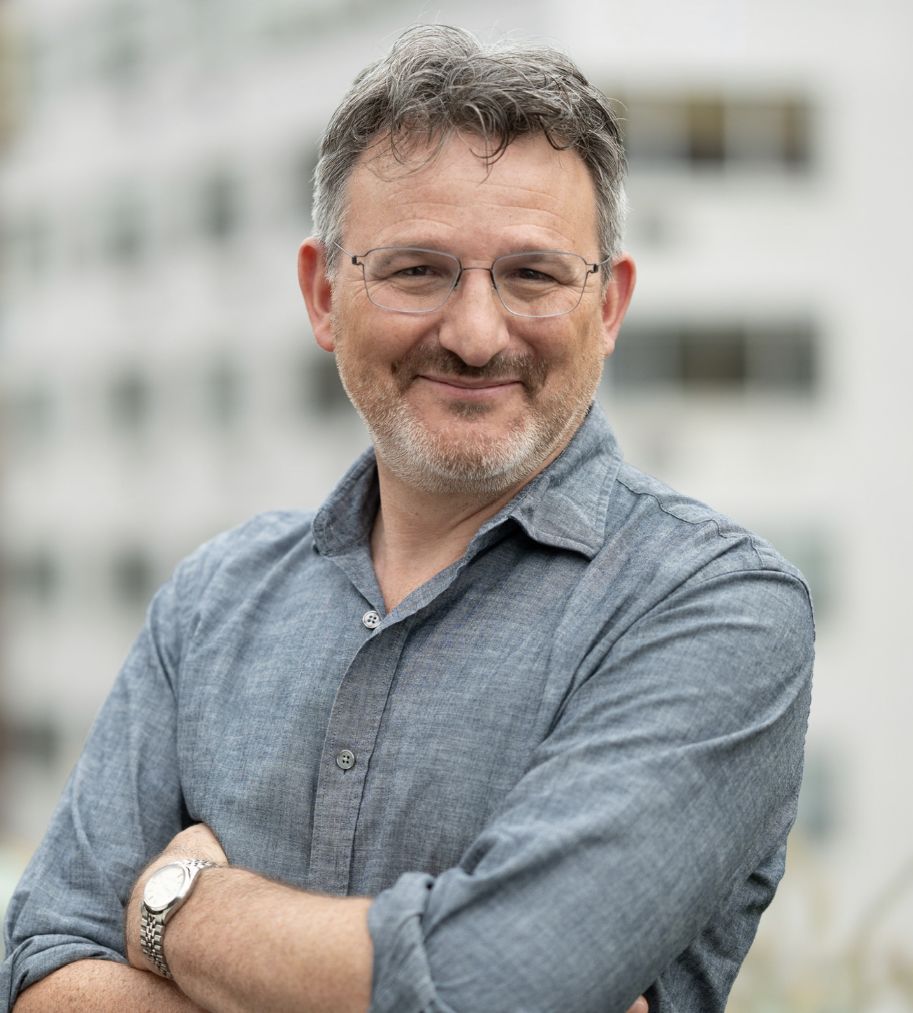
Andy Wiley Schwartz
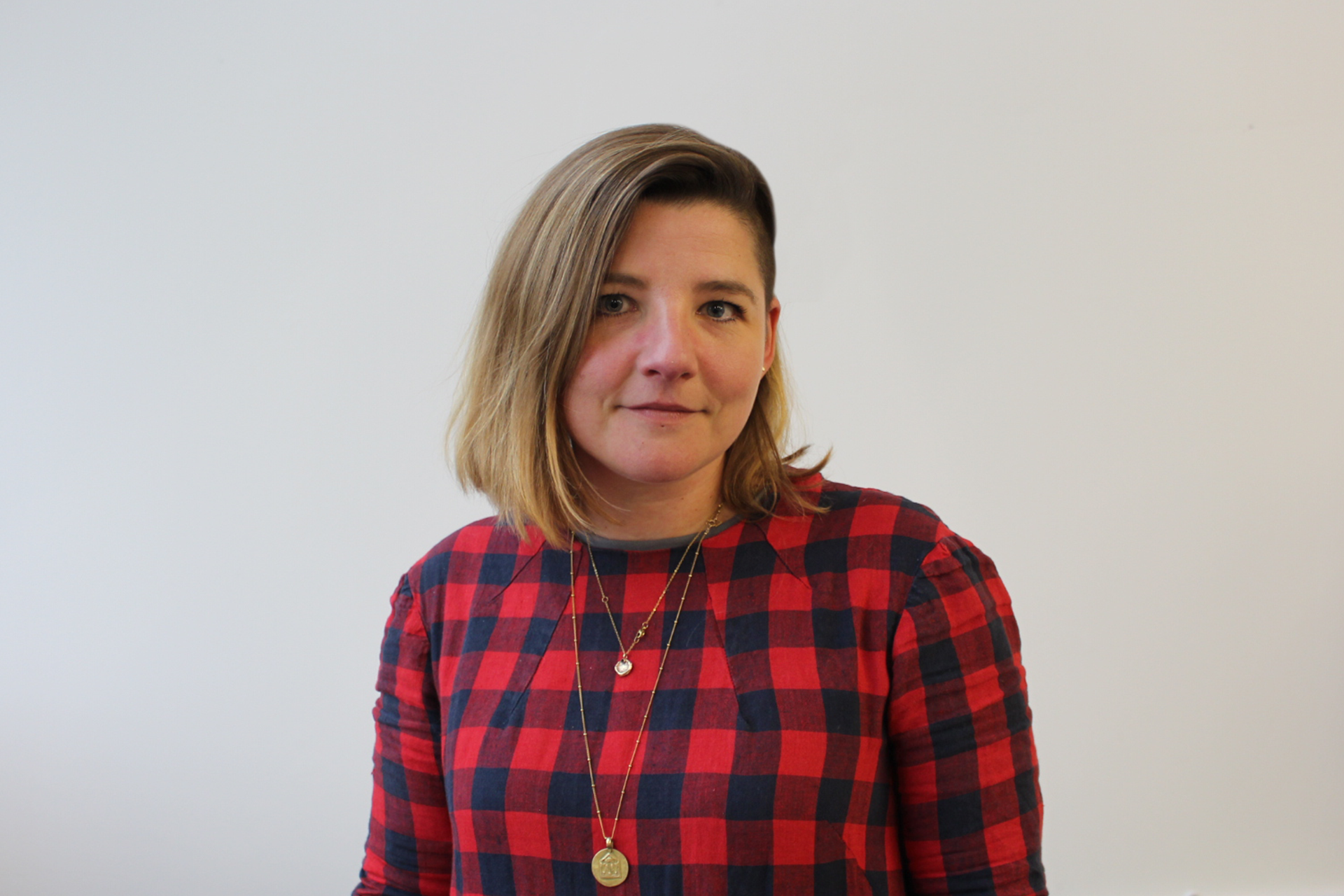
Emily Berwyn
Photo by David Vives on Unsplash
Photo by David Vives on Unsplash
Learn more about temporary urbanism and adaptability
At The Bartlett School of Planning, we offer a unique hands-on learning environment guided by urban planning experts and practitioners at the forefront of our field including adaptable cities and temporary urbanism.
Podcast produced by Adam Batstone
© UCL The Bartlett 2025

